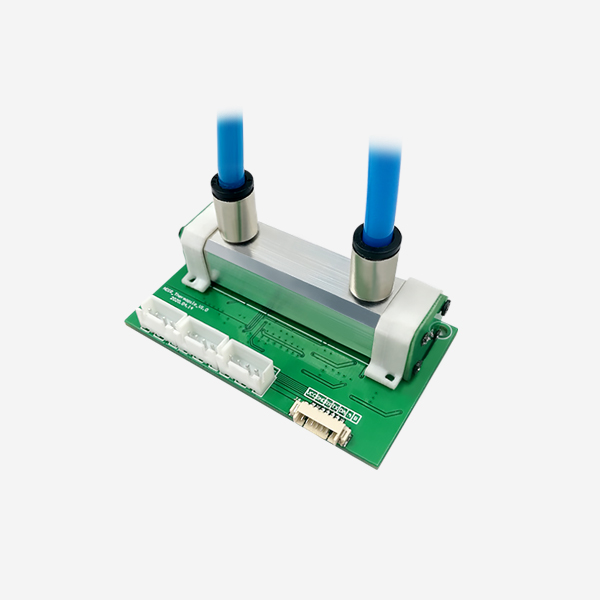Nondispersive infrared (NDIR) sensors have become a key technology in a wide range of industries, from environmental monitoring to industrial process control, and from healthcare to automotive applications. These sensors use the energy of infrared light to detect gases with high precision and reliability. Utilizing the unique absorption properties of different gases in the infrared spectrum, NDIR sensors provide a non-invasive and efficient means of gas detection, playing a key role in ensuring safety.
Understanding NDIR Sensor
An NDIR sensor is essentially a device that employs the non-dispersive infrared spectroscopy principle to identify and quantify specific gases in a given environment. It works based on the fact that each gas has a unique absorption spectrum within the infrared region. When a beam of infrared light passes through a gaseous sample, certain wavelengths will be absorbed by the target gas molecules, depending on their molecular structure. The amount of absorption is proportional to the concentration of the gas.

The core components of the NDIR sensor include an infrared source, a measurement chamber for gas sample introduction, an optical filter for isolating specific infrared wavelengths absorbed by the target gas, and the measurement of transmission after passing through the gas sample. By comparing the intensity of the incident light, the sensor is able to determine the concentration of the target gas with high precision.
Working Mechanism

- Infrared Source: The sensor begins its operation by emitting a continuous or modulated infrared light into the measurement chamber.
- Wavelength Selection: A specialized optical filter ensures that only the specific wavelength corresponding to the absorption band of the target gas reaches the detector. This step is crucial to avoid interference from other gases or background noise.
- Absorption: As the light interacts with the gas molecules, some energy is absorbed at the characteristic wavelength. The degree of absorption depends on the type of gas, the concentration of the gas, and the path length through which the light travels.
- Detection: The detector, typically a thermopile or a photodiode, captures the remaining unabsorbed light. The reduction in the light intensity corresponds to the concentration of the target gas. The detector then converts this change in light intensity into an electrical signal.
- Signal Processing: Advanced algorithms convert these electrical signals into accurate gas concentration readings. Some NDIR sensors also feature temperature compensation mechanisms to maintain accuracy despite fluctuations in ambient conditions.
Applications of NDIR Sensor
Environmental Monitoring: NDIR sensors play a pivotal role in greenhouse gas monitoring, particularly for carbon dioxide (CO2), methane (CH4), and nitrous oxide (N2O). They are used in air quality stations, climate research facilities, and for monitoring indoor air quality in commercial buildings and homes.

Industrial Process Control: In chemical processing plants, refineries, and manufacturing facilities, NDIR sensors monitor toxic and flammable gases such as CO, NOx, SO2, and hydrocarbons to ensure worker safety and optimize process efficiency.
Automotive Industry: Advanced vehicle emissions testing relies heavily on NDIR sensors to measure exhaust gas concentrations accurately, assisting in meeting stringent emission standards.
Medical Applications: Medical devices like capnographs use NDIR sensors to measure the concentration of exhaled carbon dioxide during anesthesia or resuscitation procedures.
Agriculture and Horticulture: In controlled-environment agriculture, NDIR sensors help regulate the levels of CO2 inside greenhouses to promote optimal plant growth.
Advantages of NDIR Sensors
Accuracy: NDIR sensors offer excellent linearity, repeatability, and long-term stability, making them ideal for demanding applications where precise gas measurements are essential.
Selectivity: Each gas has a unique absorption spectrum, allowing NDIR sensors to selectively measure one gas without being affected by others present in the atmosphere.
Robustness: Many NDIR sensors are withstand harsh environments, operate over a wide temperature range, and resist interference from dust, humidity, and vibrations.
Low Maintenance: With no consumable parts and minimal drift, NDIR sensors require less frequent calibration and maintenance compared to other gas sensing technologies.
Future Trends
As technology continues to evolve, NDIR sensor are becoming smaller, more cost-effective, and increasingly integrated into wireless and IoT systems. Enhanced miniaturization and integration capabilities enable the deployment of these sensors in new areas, including wearable devices, smart home appliances. Furthermore, advancements in material sciences and photonics promise improved sensitivity, broader detection ranges, and faster response times, propelling the future application scope of NDIR sensors even further.
Conclusion
In today’s world, where accurate and reliable gas detection is critical for industrial safety, NDIR sensors are an invaluable tool. Their ability to identify specific gases in complex mixtures, as well as their powerful performance, make them indispensable in various industries. With ongoing technological innovations, NDIR sensors will continue to revolutionize how we monitor and manage our environment, leading to safer.
